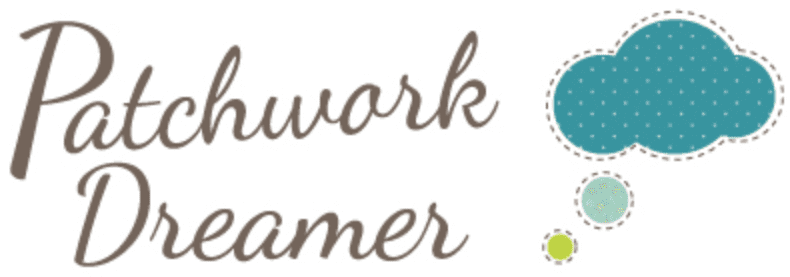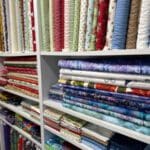Fabric Selection Tips for Patchwork and Quilting Success
When it comes to patchwork and quilting, fabric selection is a pivotal step that can make or break your project. The right choice of fabrics can enhance the visual appeal and longevity of your quilt, while poor choices may lead to frustration and disappointment. In this blog post, we’ll explore some essential fabric selection tips to help you make the best choices for your quilting projects. These are just my views and suggested as a guide rather than hard and fast rules.
1. Quality Matters
The quality of your fabric plays a huge role in the overall outcome of your quilt. High-quality 100% cotton fabric which is the preferred choice for most quilters and is particularly recommended for new quilters. Avoid poplin as although often 100% cotton it is very light weight prone to fraying and is quite slippery to handle. Similarly fabric from supermarkets advertised as quilting fabric is often of inferior quality, great for craft projects but I would not advise for patchwork and quilting it really is a false economy. Quilters cotton is durable, easy to work with, and it holds up well over time. Avoid fabrics with a synthetic content, as they will behave differently to quilters cotton and will shrink and deteriorate at a different pace to cotton. These fabrics are also more challenging to piece and quilt which again for a new quilter would be something else to over come. I say at the start of my beginners classes to get the techniques under your belt with quilting fabrics first then, if you wish, try these skills with more challenging fabrics.



2. Pre-Wash Or Not to Pre-Wash Your Fabrics
This age old question has been long argued over. I have to be honest here and say I never pre wash my fabrics. My argument is that even those that are die hard pre washers don’t wash pre-cuts as the fraying is too bad. If I am not washing pre cuts why should I wash all the other fabrics? To balance the argument the reasons given to pre wash are washing helps remove any sizing or chemicals that might be present in the fabric, preventing unwanted shrinkage or colour bleeding (particularly with batik fabrics) after your quilt is complete. I will add that I always put in a good handful of colour catchers in when washing a quilt.
3. Colour and Contrast
Think about the colour scheme and how you wish the quilt to sit once complete. Do you want it to blend in with the room in a fully coordinated way or do you just wish to use favourite colours that make you smile and may contrast? Keep these questions in mind when choosing fabrics for your quilt. You could turn to a colour wheel although I find this a bit restricting as rules in a creative process does not sit well for me (personal opinion) but if you are unsure it is a good tool to start. I think nothing beats putting fabrics together, auditioning if you like. Walking around a shop with a piece of fabric put up against everything on the shelf will often do the trick and more often than not it’s something you would not have considered. Another trick I have found useful is taking a black and white picture of the fabrics this will show you the contrast and the rule of thumb (you know I am not one for rules but I grudgingly agree this works!) is to have three shades of grey, light, medium and dark on that black and white picture. Fabric shown is Meadowside by Cassandra Connolly for Lewis and Irene.

4. Print Scale and Direction
Attention to the scale and direction of the fabric’s prints needs to be noted. Small-scale or ditsy prints work well for smaller pieces or intricate blocks and sometimes as a background or blender, while large-scale prints can be a focal point in your design or used to fussy cut for EPP or kaleidoscope quilts. Don’t be put off large print, great fun can be had and stunning effects can be achieved with them. Ensure that the direction of the print complements your pattern. For instance, directional prints like stripes or words should be cut and arranged with care or with carefree depending on how you wish your quilt to look. I have a particular love for stripes as a binding but care is needed when cutting to get this looking good.
5. Fabric Texture
Texture can add depth and interest to your quilt. Mixing different textures like solids, tone-on-tone prints, and textured fabrics can create visual appeal and tactile interest. Be mindful of how the texture affects the overall look and feel of your quilt, they can make the quilt quite traditional looking so if you are looking for a modern quilt stick to solid fabrics. This quilt has tone on tone fabrics as well as ditsy fabrics as the background to the applique. This quilt is made using The 12 Days of Christmas book by Nancy Halvorsen

6. Scraps and Stash
Quilters often (always!) accumulate a stash of fabric scraps over time. Always look at your stash and if they work use these in your projects. Scraps can add a little something to your quilts. Organize your scraps by colour or size to make them easier to access when needed. Lori Holt cuts her scraps into various sizes only throwing out fabric smaller than 1.5 inches check out her blog on this subject here https://beeinmybonnetco.blogspot.com/2013/08/from-my-quilty-studiohow-i-save-my.html The “frugal” Cornish maid in me bulks at throwing out any fabric and I will just suggest crumb quilting with those very small pieces………..
This book Scrappiness is Happiness by Lori Holt is full of great ideas for using up your scraps.

7. Consider the Quilt’s Purpose
Think about the intended use of your quilt when selecting fabrics. If it’s a quilt for a child, maybe use bright and cheerful colours and designs to make an eye spy quilt, great for tummy time. For a more formal or traditional quilt, opt for subdued and classic fabrics maybe reproductions of fabrics past. The quilt’s final use can be a great guide for your fabric choices.
8. Stay Inspired
Browse quilting magazines, Pinterest boards, Instagram or quilting blogs for inspiration. Find your quilting tribe on social media. Join local groups and go to shows and take pictures, seeing how others have used fabrics in their quilts can be a great help in your creative endeavours.
10. Trust Your Instincts
This I think is the most important advice in this guide. You have to work and possibly live with this quilt or sewing project, trust your instincts and personal style. If you love the fabric go for it. Your colour pallet and fabric choices will evolve over time as you do. Your sewing practices will change and develop. You are creating a piece of textile art each should be as unique and the person making it. Don’t be swayed by friends, shop workers or anyone else this is your decision follow your heart. That was a dramatic statement but you follow my drift.
In conclusion, the old adage of “buying fabric and quilting are two separate hobbies” is for many of us true but lets join the two. Take your time, experiment, and enjoy the process of choosing fabrics for your next quilt. Use the ideas in this blog as a guide rather than rules. If you have anything to add please comment below I love to hear others ideas and processes.
Quilting Hugs
Mary


